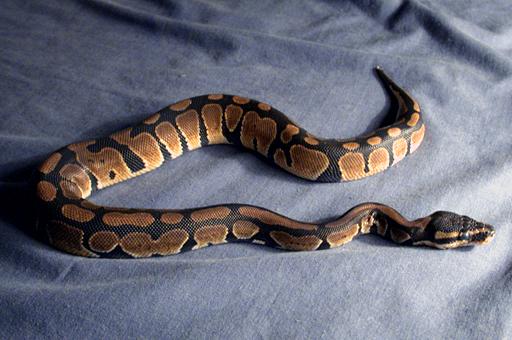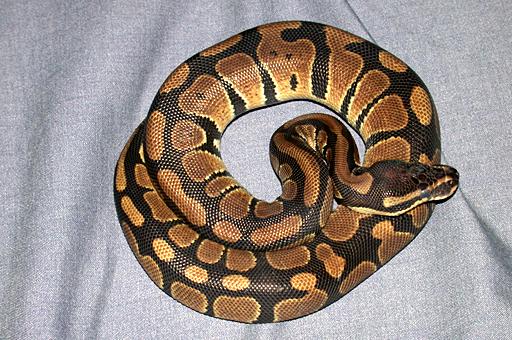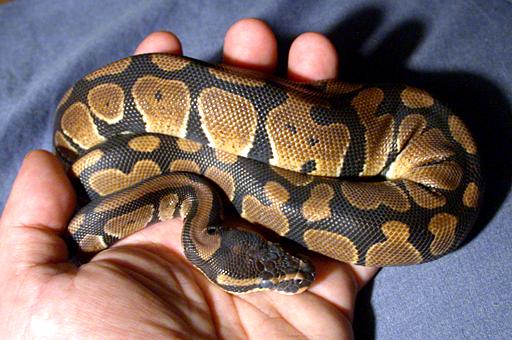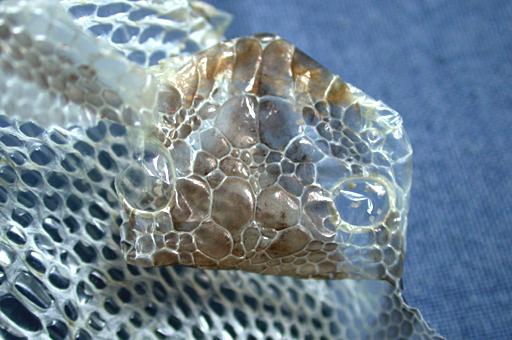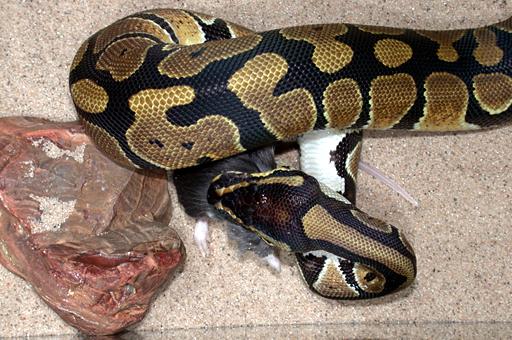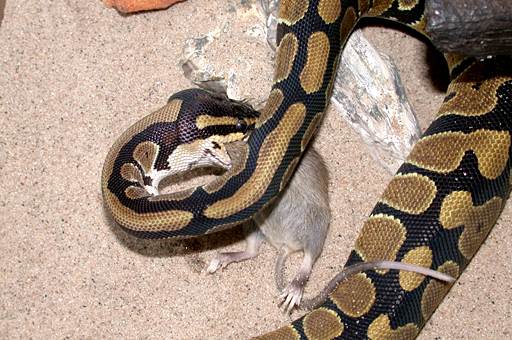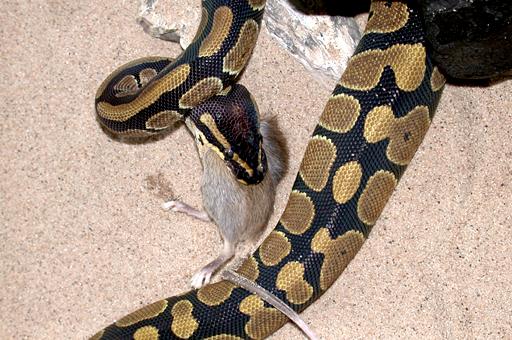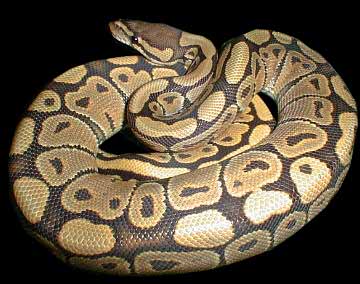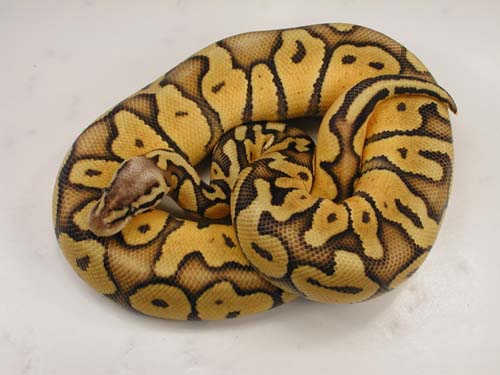
Updated:
Snapping Turtle Page
bookmark this page
Animal Photography by Stan Gielewski
Introduction and diary - facts, caresheets, photos, links
main
snakes
boa constrictor
short tailed python
blood python
chameleon
A short introduction to my friend:
- Ball Python - latin name Python regius, also called Royal Python (in Europe)
- male, captive bred
- very tame, friendly, absolutely does not mind to be handled, calm, responsive and curious - just like ball pythons are ! The best pet
snake for anyone wanting to take care for a serpent!
|
Photos:
Casual:
Shedding:
Eating:
|
Some photos of ball pythons that cought my attention:
Below are examples of how diverse and beautiful ball pythons can be.
( Disclaimer: the images below have been collected from the internet using Google.com search engine and had no copyright information with them, but if any would violate anyone's copyrights please let me know and I will remove them promptly )
|
|
There is a huge variety of coloration in ball pythons which has been accomplished due to experimentation and selection when choosing the individuals for breeding.
There are literally dozens of types and some are quite rare and expensive, costing thousends of dollars for one animal.
|
Some basic info about ball pythons:
|
Ball pythons are from West and Central Africa. They can be found in plains, grasslands and open forests.
They choose to live under scattered rocks and in hollow logs, but are also comfortable in trees. They are considered to be
gentle and curious snakes. They reach between 4 - 6 feet ( 1.2 - 1.5 meters ) with females growing larger. They live on average
more than 25 years and apparently a record of one captive ball python is 48.
In the wild they eat amphibians, lizards, other snakes, birds and small mammals, but in captivity feed mostly on mice and rats.
They reach sexual maturity in three to five years. Female will lay 4 - 10 eggs and remains with them without feeding until they hatch.
The eggs hatch after about 3 months.
|
There are many types of commonly kept pythons:
- Ball Python - Python regius ( up to 4-6 feet )
- Burmese Python - Python molurus molurus ( up to 20+ feet )
- Reticulated Python - Python reticulatus ( up to 25+ feet )
- etc. - more to come
Basics about captive setup:
|
At the size reaching maximum 4-6 feet ball pythons are not the largest of snakes. They are nocturnal and mainly terrestrial spending
most of the day coiled up in their hide out places. They will become active and explore at night, and although they feel comfortable climbing staying
high up in branches is not their favorite activity. They prefer small tight places where they can feel safe and comfortable. |
|
The most important thing to remember and take care of when keeping ball pythons is keeping the adequate temperature and humidity.
A 20-30 gallon tank at first and 40-50 is enough for the snakes life (25+ years). The tank must be covered with screen to prevent the snake from escaping.
There should be a 'cold end', 'hot end' and a basking are
a bit warmer than the rest in the tank. The temperatures for the cooler area should be around 72F , for the warmer area 80F and
about 92F for the basking spot. There are three main sources of heat that can be used: an undertank adheseve heat mat, a ceramic heat emitter and an overhead
night heat lamp. Depending on the temperature of the surrounding are the overhead light should be switched off at night to lower the enclosure temperature a bit, but if
it flactuates naturally with the romm getting colder at night it is ok to leave it on. The humidity should be maintained at 50-70% and not lower than 45% or not higher than 90%
(in both cases risking respiratory infections and at lower temperatures difficulty for the snake to digest the food or defecate). It is good
to raise the humidity level by misting a couple of times a week to levels around 75-80%. |
Quick Temperature Converter: enter a number in either field, then click 'calculate'.
All purpose universal converter:
click here (453 Kb, left click + choose 'open')
|
|
The best material for substrate is cypress mulch and papers (not chemically treated or printed). It is easy to clean and the cypress will help in keeping the
moisture at a desired level. It is also ok to use a very fine sand, which will pass through the snake if swallowed - unlike gravel. Gravel should
never be used. If digested it might lead to constipation, getting the snake impacted and the need of a vet's help.
The enclosure should have two hiding places - one at the warm end, one at the cold end, and possibly another one filled with moist coconut fibers
to maintain a local high humidity area for the snake if it decides it needs it (important and used frequently by the snake before shedding; right humidity is very important
for the proper shedding process and too low makes it difficult).
To monitor temperatures and humidity the tank should be equipped with at least three thermometers (one at the cold, one at the hot end about an inch above the bottom, and
one above the basking spot) and one higrometer for shecking the humidity, situated in the middle of the enclosure.
There should also be present at all times a bowl with drinking water for the snake. It should be stable not to tip over and large enough to accomodate the whole snake
if it decided to soak in it.
The ball python will usually eat mice or rats in captivity. Smaller snakes should be fed about once a week first smaller then larger mice, 2-3 at a feeding as they become larger
and eventually switched to rats. Larger snakes will eat less frequently, two times a month, but they are also known to refuse eating for months at a time - which is ok
if there are no visible signs of weight loss or any other health detoriation.
Many people prefer feeding their ball pythons frozen or prekilled rodents, but there is also a large number that feed their snakes live food. In such case the snake should
never be left alone with the mice or rat. Leaving it unsupervised may lead to the snake being bitten, severely injured or even killed. Also, a very important thing
is to wash hands before handling the snake - especially after handling rodents. By smelling the snake might mistake the handlers hand for food and strike at it.
Is a good practice to handle your python daily for few minutes to make it accustomed to being handled and help it recognize you.
|
About my setup:
|
My ball python lives in a 20 gallon glass tank with one 75W overhead heat lamp and one undertank heating mat.
For substrate I use right now very fine sand. It has two hiding places - one at the warm end and one at the cold end. For interior I use pieces of petrified wood
and fossil bone, one of which is hallow and makes up for a nice hiding spot which is at the cooler end but being aongated connects also to the warmer area
in the middle of the tank. There is also a large tapperware bowl with water. To monitor themperatures and humidity I use three thermometers and one hygrometer.
The set up is covered with a cover and a mesh secured from being moved by the snake with a large stone on top.
|
Breeding:
Health issues:
Ball python links:
Ball python clubs:
My Python Diary:
Growth charts:
| Date | Dec. 22/2002 | Feb. 05/2003 | March 25/2003 | May 04/2003 | June 28/2003 |
| Length | 60 cm (1.9' - 23") | 60 cm (1.9' - 23") | 72 cm (2.3' - 28") | 85 cm (2.8' - 33.5") | 96.5 cm (3.1' - 38") |
| Weight | 225 g (0.5lb. - 7.9oz.) | 250 g (0.55lb. - 8.8oz.) | 375 g (0.82lb. - 13.2oz.) | 625 g (1.3lb. - 22oz.) | 725 g (1.5lb. - 25.57oz.) |
| Remarks | arrived | n/a | n/a | ate 2 mice yesterday | 2 weeks no food because of shedding |
|
The only difference between people who hate and love reptiles is that those who hate them never tried to know them.
Those who did become addicts.
Yes, you can say reptiles are dangerous...
Stan Gielewski |
Design by
Stan Gielewski 2002 - 2003
|
All images and text Copyright © Stan Gielewski 1963-2063;
copying and reproduction in any form strictly prohibited
|

|

